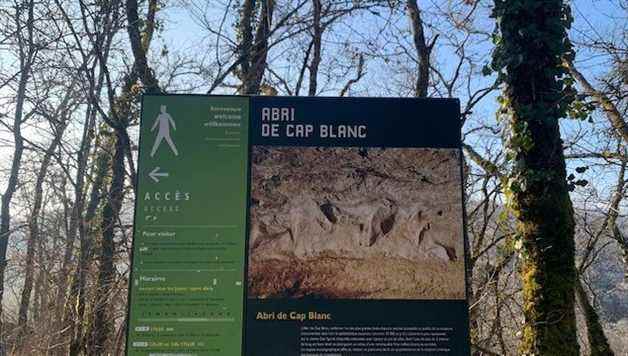Pascal Villesuzanne, guide at the Abri de Cap Blanc, explains that the site was discovered in 1909, when archeology was barely emerging. Excavations with shovels and pickaxes have led to the discovery of many vestiges which attest to a succession of prehistoric occupations dated from the Solutrean, Magdalenian and Asilian.
They were nomadic hunter-gatherers. At Cap Blanc, the various prehistorians who followed one another between 1909 and 1992 contributed a lot to the understanding of the place.
Indeed, have succeeded here: Denis Peyrony, Alain Rousseau and recently, Jean-Pierre Chadelle.
And what roles did they play?
They unearthed many carved flints, which correspond in particular to tools and weapons, animal bones, for example of horses which were hunted and consumed on the spot. There are also remains of hearths or campfires, some items of adornment, decorated objects…
– Burnished Nathanael
So many elements that allow us to touch the daily life of our ancestors of the Upper Palaeolithic.

– Nathanael Brunie
However, Cap Blanc is not just a place to live. It is also known for its monumental sculpted frieze and the presence of a burial
In other words, Kaplan is also a place rich in artistic, symbolic and spiritual expressions.
Cap Blanc shelter:
D48
24620 MARQUAY
Phone. : +33 5 53 59 60 30, +33 5 53 06 86 00
Email: [email protected]
Full price: €8
From September 16, 2021 to May 14, 2022:
Open 10 a.m. – 12:30 p.m. / 2 p.m. – 5:30 p.m.
Closed on Saturday
